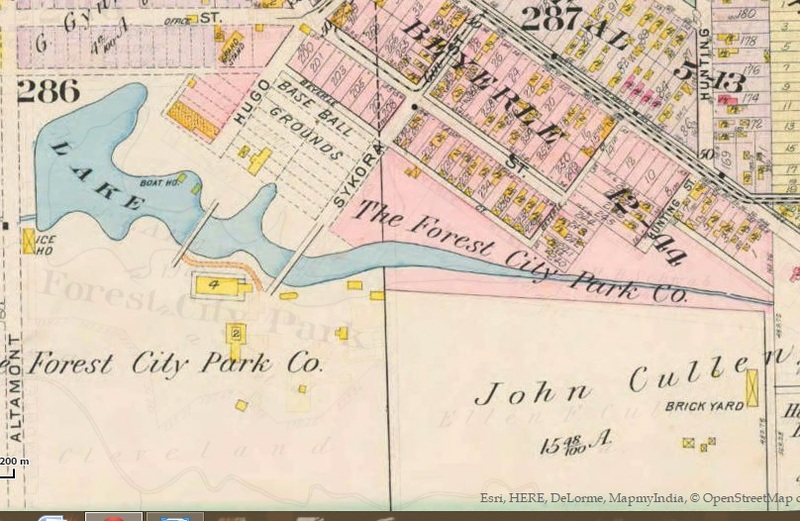
In this age of faster, higher coasters and parks like Cedar Point and King’s Island within a few hours drive, it is easy to forget some of the early amusement parks that once populated Northeast Ohio. The first such attraction for the city of Cleveland was Forest City Park in what is now the Slavic Village neighborhood.
Opened in 1883, Beyerle Park drew its name from its first operator, George William Beyerle, who envisioned a summer resort where people could get away from city life and enjoy themselves. Early versions of the park had picnic areas, a manmade lake, a boathouse, baseball grounds, a pavilion, and a small zoo.
Though the park was initially successful, within a decade of the park opening Beyerle was facing a number of financial problems. His business partner, J. Sykora, was signing checks without authorization. This coupled with a large number of lawsuits of patrons who were injured when a bridge collapsed on the lake forced Beyerle to sell the park.
Although the park was taken over by A. B. Schwab et al on May 5, 1889, and its name was changed to Forest City Park, no great change would occur until 1902. It was at this time that Dudley Humphrey assumed management of the 65-acre park and transformed the mode of operation. Humphrey believed Forest City Park, as well as Euclid Beach Park, which he also managed at this time, were places of immoral influence that he needed to purify. Guests would be turned away at the gates if dressed inappropriately and removed from the park if they acted in a way not to Humphrey’s standards. Under his control, the park removed its beer garden, stopped serving alcohol, and cut down on vaudeville and sideshow acts. In place of these corrupt forms of entertainment, Humphrey added rides and family friendly attractions- a shooting gallery, merry-go-round, a theater, and a “switchback” roller coaster. Under his management the two parks were on a system called the “Humphrey Park Plan”; this allowed guests to buy multiple tickets at a cheaper price and could use the tickets at either park.
Despite the numerous attractions that Humphrey brought to the park, attendance suffered. The large immigrant population in the neighborhood surrounding the park disliked the lack of alcohol on the grounds, whereas the people living further out found it easier to spend the day at Euclid Beach Park or Luna Park. At this time, Cedar Point was also growing in popularity; by the end of the decade, it added additional roads for easier access and opened the classic Cyclone roller coaster, the fastest and tallest in the world at this time, along the beach.
With the increased popularity of the automobile, Forest City Park faced a new challenge; built in the era of railroads and streetcars, the park had no parking spaces and showed no intentions of adding them. Without this access, patrons were left with the options of parking farther away off grounds and walking back to the park entrance or paying to take the street car. Without a suitable option for driving customers, attendance at the park continued to fall.
The final straw came in the early 1920s, when a fire damaged part of the park. The park closed for good soon after. In the 1930s, the city sold the westernmost part of the park to the steel mills to dump slag. By the 1960s, the rest of the park was filled in and houses placed on the empty fields, covering what little remained of the Slavic Village’s amusement park history.
Images







